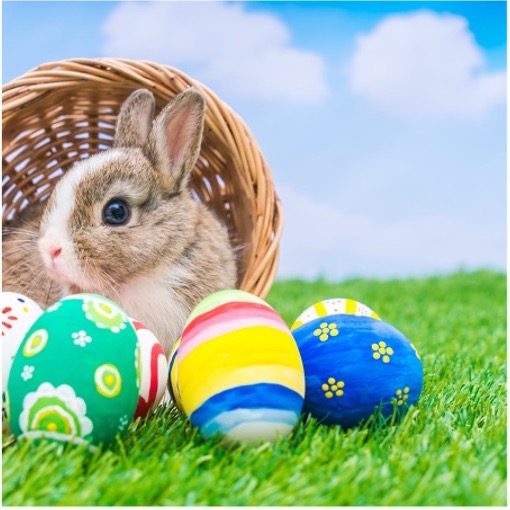Abigail Yarrison ’24, Managing Editor

As Easter approaches, and we look forward to the Resurrection of Christ, we also await the arrival of that famous rabbit, second only to Bugs and Roger. That’s right, the Easter Bunny, who comes to town once a year with baskets full of chocolate eggs and marshmallow chicks. But, the Easter Bunny’s one of those things that no one quite remembers where it started. Who is this elusive rabbit and what is with his obsession over eggs?
As it turns out, the Easter Bunny started in Germany around the 15th century. An egg laying hare came around during Eastertide season, that is the liturgical season from Easter Sunday to Pentecost, and gave eggs to children who were good. So, a Spring Santa Clause. The hare was called “Osterhase” or “Oschter Haws,” hase literally meaning hare. Children would make nests for him to lay his colored eggs in, and leave a carrot or two out for him to munch on his long night. In the 1700’s, when German immigrants came flooding into Pennsylvania, the tradition spread. The hare became a rabbit, the nests became baskets, and the eggs turned into chocolate!
So why a rabbit? Well, rabbits were seen as symbols of fertility and new life because of their uncanny ability to reproduce so, so, so, so much… There might also be a connection to the German-Saxon goddess of spring and dawn, Eōstre. She was sometimes said to have a hare companion with her, but there isn’t anything to officially link the Easter Bunny and Eōstre.
Now, the origin of Easter eggs is a bit more complicated. Similarly, to rabbits and spring, eggs are symbols of new life. In Christianity, some even equate the egg with Jesus coming out of the tomb. Eggs first became associated with Easter in the 13th century in Europe. There was a strict Lenten fast in which eggs were prohibited. Traditionally, the day before the fast began, children would go door-to-door asking for eggs. I didn’t think eggs counted as meat, but I guess most things, including the food groups, were different during medieval times. But because the eggs were a special treat, they would often be decorated for Easter giving us that most fun tradition of dying eggs. Some Eastern Orthodox Christians dye their eggs red, symbolizing the blood of the Lamb, or green for the coming of spring after winter.
Germany not only gives us the greatest of Christmas traditions (trees, gingerbread houses, and Advent wreaths), but they also boast the creation of the Easter Bunny. We have a lot to thank them for.





